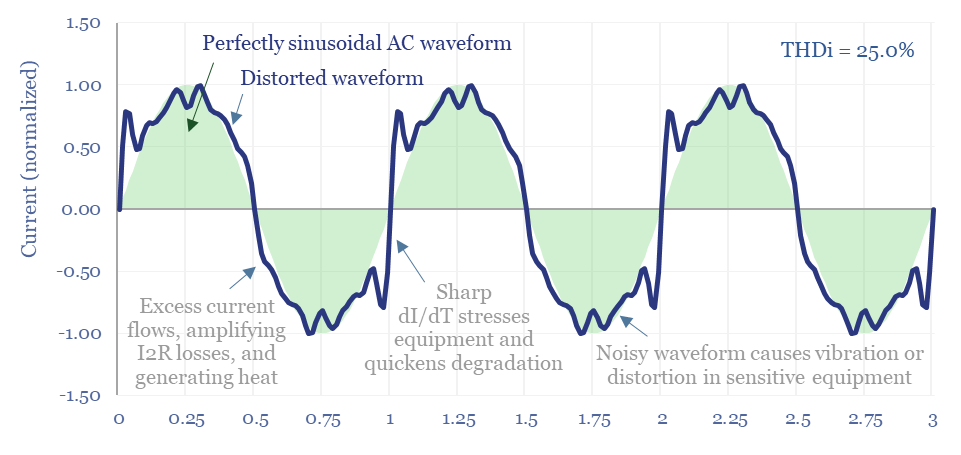The $1bn pa harmonic filter market likely expands by 10x in the energy transition, as almost all new energies and digital technologies inject harmonic distortion to the grid. This 17-page note argues for premiumization in power electronics, in harmonic filters, including around solar, and screens for who benefits?
The perfect AC power waveform is sinusoidal. Current and voltage both rise and fall in a smooth wave. These current and voltage waveforms are perfectly in phase. Conversely, harmonic distortion occurs when AC waveforms are non-sinusoidal, or otherwise jagged, causing resistive losses, excess heat generation and equipment degradation. These issues are explained on pages 2-4.
Case studies of harmonic distortion, and their negative consequences, are described on page 5.
Harmonics are becoming more prevalent. Harmonics were mostly absent from grids until the 1960s, when computer systems and other digital devices came of age. But almost all forms of new energies are non-linear, injecting distortion to power grids.
Harmonic distortion caused by DC devices are discussed on pages 7-8, including the signatures of electric vehicle chargers, grid-scale batteries, variable frequency drives such as in heat pumps, LEDs, and energy consumed by internet and big data devices.
Harmonic distortion caused by inverters are discussed on pages 9-10, including for solar inverters and wind converters. Harmonic distortion from solar is particularly interesting and controversial, as discussed on page 11.
Active harmonic filters are the most effective antidote to harmonics. Their workings and costs are discussed on pages 12-13, including implications for the ultimate share of renewables in power grids.
The harmonic filter market likely rises by 10x as part of the energy transition, hence we have compiled a screen of harmonic filter companies. A large, European capital goods company stood out. Consolidation is also underway. Leading companies are summarized on pages 14-17.
